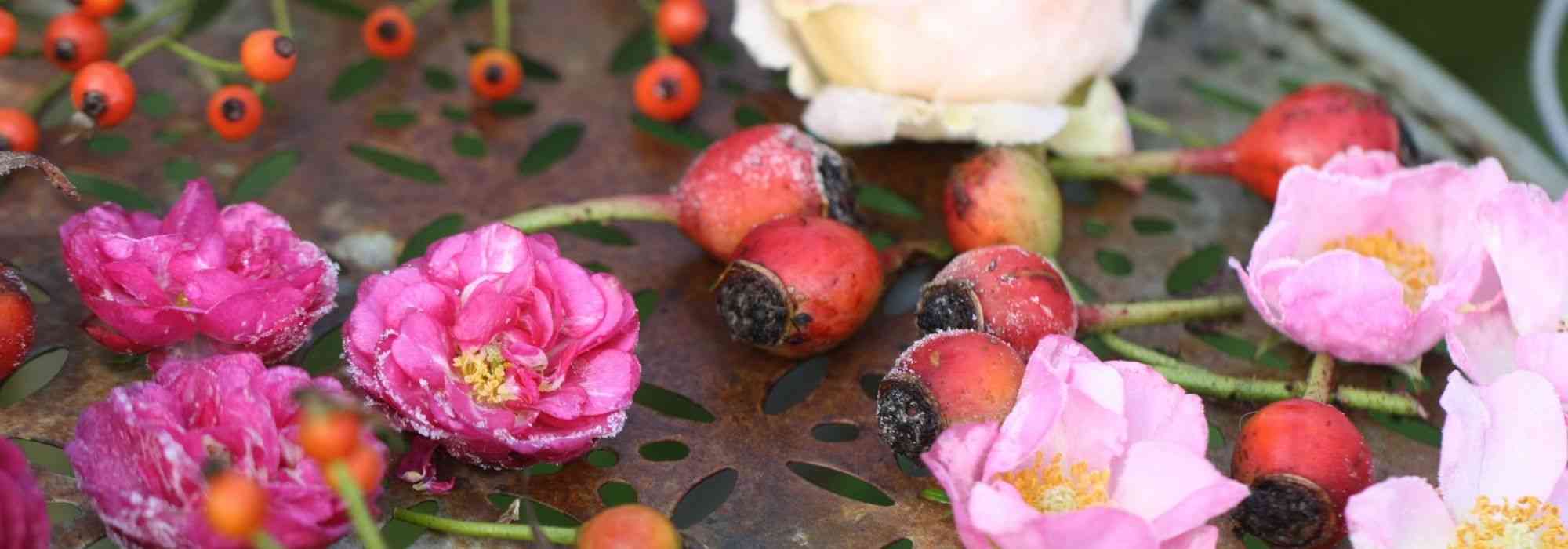
6 remarkable rose shrubs with ornamental hips
To grow in the garden or in a pot
Contents
Ornamental fruiting rose bushes are noted for prolonging colour into autumn and winter. Rose hips are highly ornamental and a boon for birds in winter. They are also a hit with fans of bouquets and autumnal decorations. Finally, to obtain rose hips, nothing could be simpler: leave spent flowers.
Discover our selection of 6 rose bushes with the most remarkable rose hips!
Botany rose Rosa moyesii ‘Geranium’
Beautiful single, crimson-red flowers with prominent golden stamens adorn this handsome bush, densely ramified, with long curved branches. They are clothed in elegant, fine, dense foliage which in autumn provides an excellent showcase for magnificent, bright-orange rose hips, amphora-shaped. Rosa moyesii ‘Geranium’ flowers only once, abundantly in June, but then wins all hearts with its exceptional fruiting in autumn. It is an undemanding, reliable, very hardy rose well suited to calcareous soil. It has earned a place in defensive or country hedges, at the back of a border or as a solitary specimen where it can fully express itself. Finally, it can reach 2 to 2.5 m or more if it grows freely in a wild garden.
Botanical rose Rosa glauca or rubrifolia
Rosa glauca or rubrifolia rosebush bears small single pink-violet flowers with white centres. Its flowering, non-perpetual, is rather short-lived but it is a beautiful species that should have a place in any garden large enough to accommodate it. It is striking for its airy foliage with a bluish sheen, shaded with grey and purple. Best of all, its numerous dark red rosehips are very early and form from August. Its superb foliage offers an interesting contrast with other bushes in a border, in a hedge or planted alone. On closer inspection, its purplish-violet shoots, with few thorns, are also very attractive. Finally, it is well adapted to calcareous soil and can reach 2 m in all directions or more.
Discover other Ornamental fruiting Roses
View all →Available in 0 sizes
Available in 3 sizes
Available in 2 sizes
Available in 2 sizes
Available in 2 sizes
Available in 2 sizes
Available in 1 sizes
Available in 2 sizes
Available in 3 sizes
Rugosa rose 'Hansa'
This is a timeless favourite among gardeners for its silky, magenta petals iridescent with mauve, highly fragrant, double, crumpled and plump. Flowers renew continuously in successive flushes, from May/June until frosts. Rugosa rose ‘Hansa’ still produces roses in October, at the same time as large fleshy rose hips redden. It is a robust, bushy rose that grows vigorously and fears neither cold, drought nor disease. The attractive crinkled foliage is dark, glossy and semi-evergreen. A must-have, it stands out for its ease of cultivation and maintenance. It proves an ideal ally in poor soils, under difficult climates or by the seaside. It only dislikes excess lime! With age, it becomes a handsome well-formed bush 2 m high by 1.5 m wide. Finally, it will find its place in a bocage, country or defensive hedge, or in a rather wild garden.
Antique rose 'Ballerina'
Rosa ‘Ballerina’ is a very pretty, elegant and vigorous rose, producing many clusters of small single white flowers with soft pink streaks on petal edges. Its elongated foliage is glossy, with fine, flexible branches that eventually arch under the weight of the flowers. After first flowering, remove faded clusters. Then the rose will rebloom and after that second flowering, leave the flowers that will form a cloud of small orange-red rose hips. Bear in mind the bush can become a little bare at the base but nothing serious. To remedy this, plant it with hardy geraniums such as variety ‘Rozanne’, which flowers at the same time, or with nepetas. It has a knack for putting on a show in a border with perennials. This rose tolerates chalky soil and requires little maintenance, except removal of dead wood if present. It is also well suited to a low hedge alongside flowering bushes. Its size is reasonable, reaching about 1.20 m in height and 90 cm in width. That is why it is often planted in small gardens. It can even be grown in a large pot!
Old garden rose 'Complicata'
Rest assured, nothing complicated about this rose whose name can be misleading. It is indeed one of the easiest single-flowered varieties to to grow in a garden. In June, it is covered with large vivid pink wild-rose flowers with a white centre and long golden stamens. Beautiful round, glossy orange rose hips follow in autumn. The rose ‘Complicata’ forms a luxuriant bush, with a supple, slightly trailing habit, reaching up to 2 m in every direction, with foliage that radiates health. Hardy and extremely robust, it tolerates all soils, even poor, dry ones, and can blend in gracefully anywhere. It is particularly interesting in natural, wild gardens alongside grasses, as a hedge or in a bed of bushes. It can even be trained against a partially shaded wall.
Liana rose ‘Francis E. Lester’
Robust and undemanding, ‘Francis Lester’ rose tolerates partial shade and can be grown as a sarmentous climber or as a bush. In June/July it produces airy clusters of small pink buds and pretty single wild-roses, white, sometimes speckled and tinged with pink on the petal edges. They are delicately scented. Its fruiting is also charming! Small orange fruits accompany its foliage while it turns coppery orange in autumn. They are also very decorative in winter on the naked, thorny branches. Satin-finish foliage is abundant and healthy. It is a vigorous rose but easy to control in growth. As such, it will easily find a place in a small garden. It will add much charm to a pergola overhanging a terrace, to adorn a garden shed, a naked wall or to clothe an old tree. Finally, it can reach 3 to 5 m in height.
For food lovers...
Traditionally, rosehip jam or jelly is made from dog rose fruits. Fruit from botanical roses or Rugosa roses can also be used (provided they have not received any chemical treatment!), but they are less fragrant than those of Rosa canina. Harvesting takes place after first frosts.
- Subscribe!
- Contents































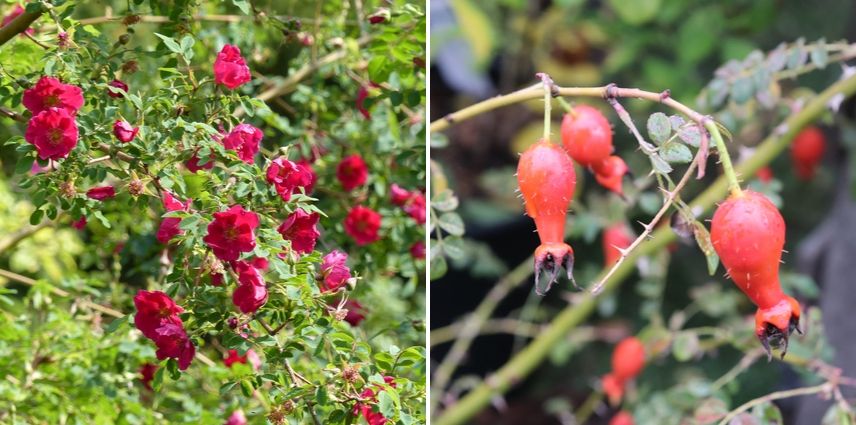
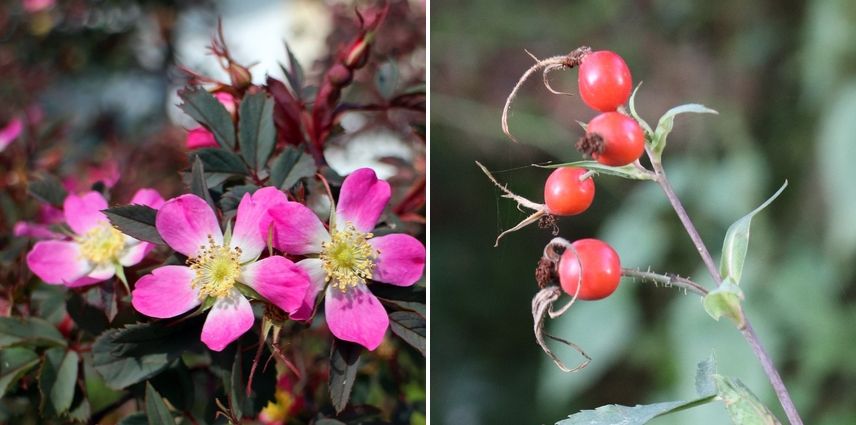
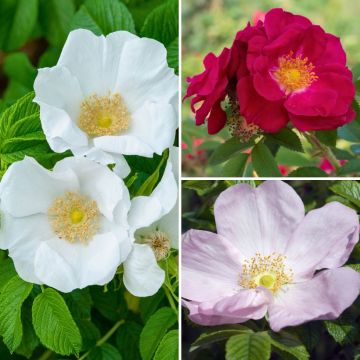
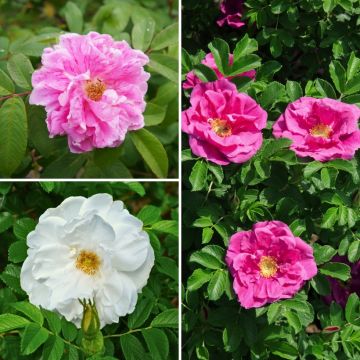

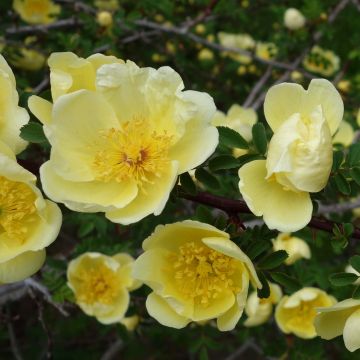
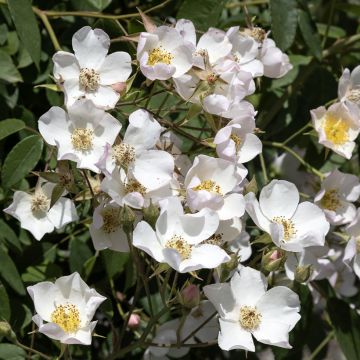
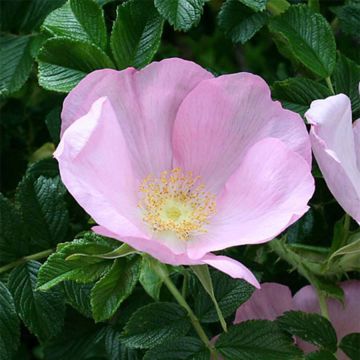
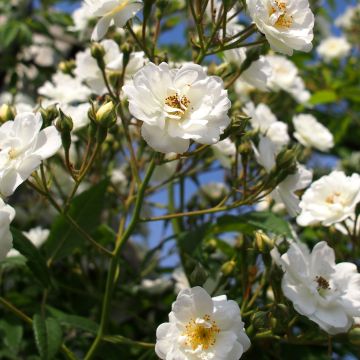
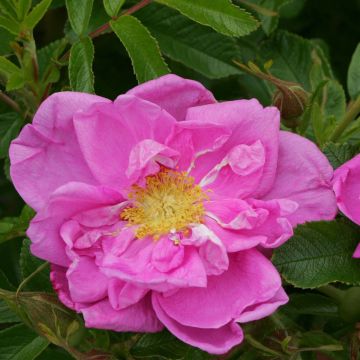
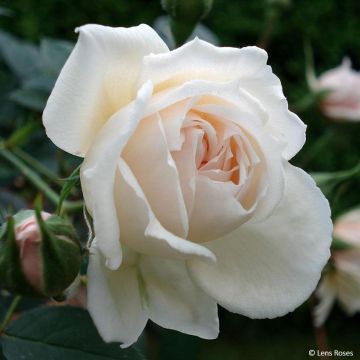
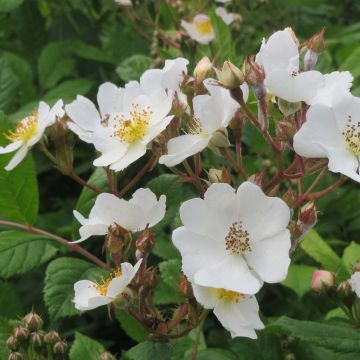
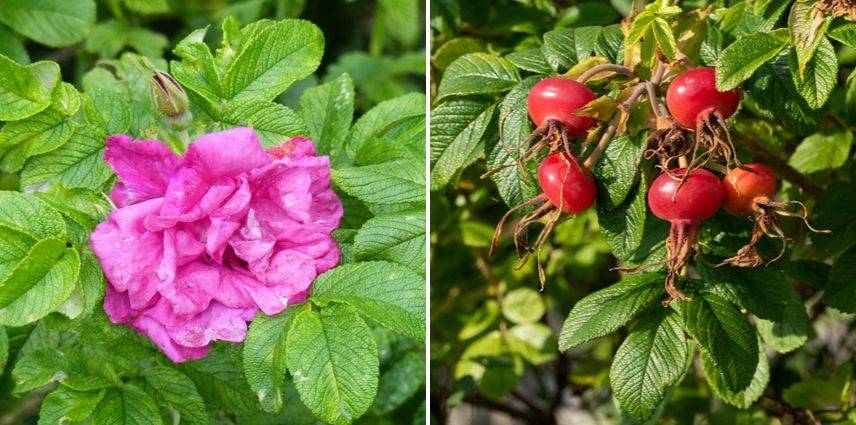
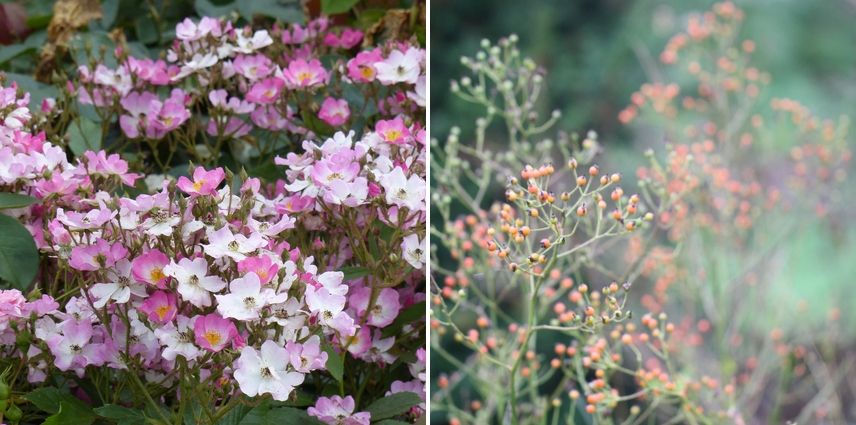
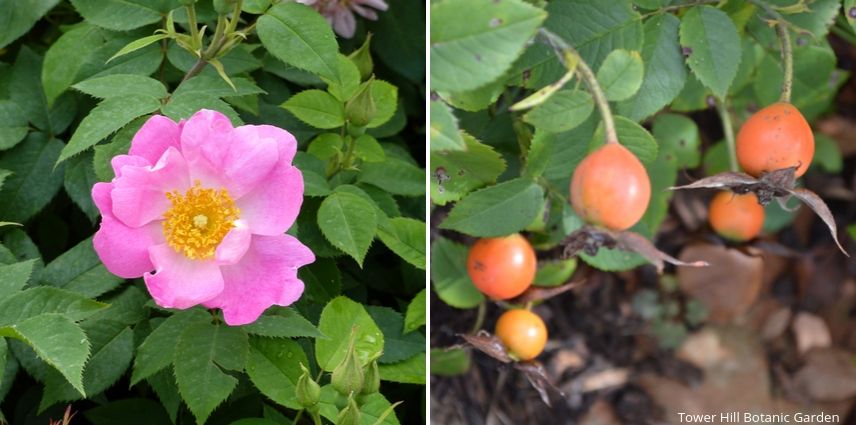
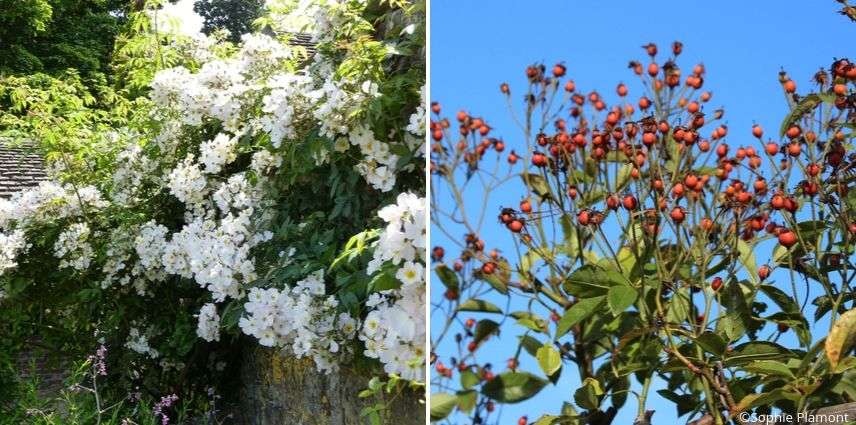
Comments